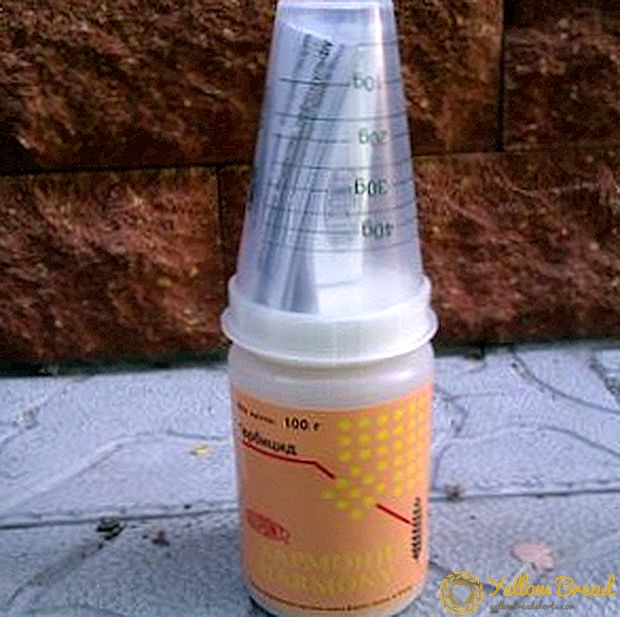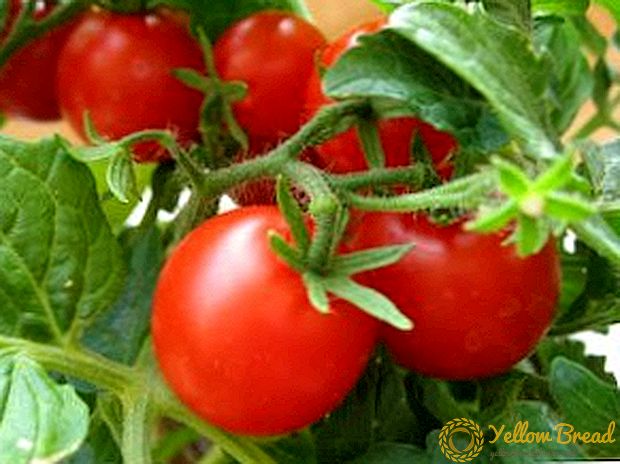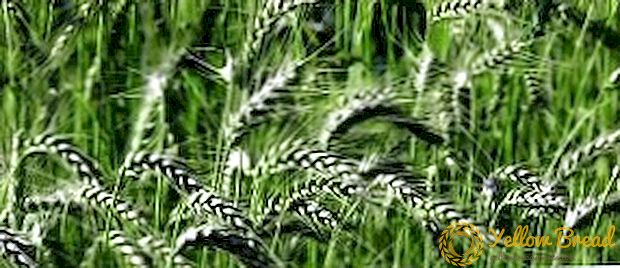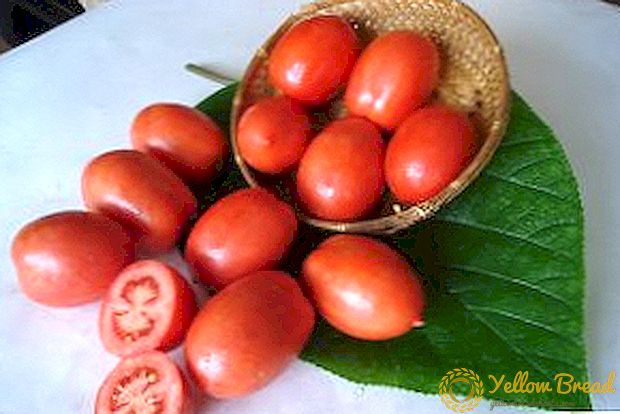 Everyone who is at least partially related to agriculture knows what constant weed control is for the harvest of crops. Too often, harmful vegetation becomes overly annoying and does not just inhibit crops, but leads to their partial destruction. In this case, do not hesitate - you need to resort to using pesticides.
Everyone who is at least partially related to agriculture knows what constant weed control is for the harvest of crops. Too often, harmful vegetation becomes overly annoying and does not just inhibit crops, but leads to their partial destruction. In this case, do not hesitate - you need to resort to using pesticides.
Agrochemical "Harmony" will help you save the garden from the most problematic plant pests. Let us consider in more detail the spectrum of distribution of the herbicide "Harmony", instructions for its use, composition and active ingredients.
- Active ingredient and preparative form
- For what crops is suitable
- What weeds are effective against
- Benefits
- Operating principle
- Method, time of application and consumption rate
- Compatibility with other pesticides
- Crop rotation restrictions
- Terms and conditions of storage
Active ingredient and preparative form
The main active ingredient in Harmony is thifensulfuron-methyl (750 g / kg), belonging to the class of sulfonylurea chemicals. Preparative form are water-dispersible granules. Herbicide is distributed in plastic cans of 100 g.
For what crops is suitable
Agrochemical "Harmony" is known as a herbicide for soybean, but it is designed to protect against the aggressor plants as well as the sowing of corn of any species and hybrid varieties, flax, and cereal crops. 
What weeds are effective against
Agrochemical perfectly copes with a variety of weeds and does not give them a chance to harm crops or reduce crop yields. The main consequences of using the drug are inhibition of vital activity or the death of a weed. It all depends on the degree of sensitivity of the harmful plant. By this criterion Weeds are divided into several types:
- Sensitive. This category includes Cocktail, Carrion, Broad Shchiritsa, Mediculum, Tagetes, Chamomile, Deaf Nettle, Field Mustard, Wild Radish, Highlander, Sorrel, etc.
- In the category of weeds, which differ medium sensitivity to the drug, includes nightshade black, wild poppy, dope, sow thistle, swan-shaped shchiren, spurge, coppice, ambrosia, dymyanka, etc.
- Some types of euphorbia, black hairy, field bindweed, small-flowered halinzog are weakly sensitive to the action of the agrochemical and endure it endure.

Benefits
"Harmony" is ahead of other varieties of agrochemicals not only in quality (which is extremely important), but also in price policy. In this aspect, the fact that herbicide has a rich list of benefits pretty relevant:
- "Harmony" is a unique multi-profile herbicide, with which you can economically and quickly clean crops from plant pests;
- the drug costs are quite low, which contributes to the treatment of large areas at a reasonable price: consumption does not exceed 25 g / ha;
- use is not limited to temperature standards (valid from +5 ° C), or the rules of crop rotation;
- the rapid dissolution in the soil makes the pesticide absolutely safe and non-toxic, but instructions should be followed;
- versatile: effective in combating a variety of pest plants and designed to protect the spectrum of crops; it can also be used in tank mixes;
- Unlike other herbicides, "Harmony" does not harm the honey-bearing insects, and, of course, man.

Operating principle
"Harmony" - representative of systemic herbicides. This chemical gets "inside" of the weed, mainly through the foliage and quickly spreads through its cells. The active ingredient of the drug affects and inhibits the growth points of the pest plant, stops the processes of cell division of shoots and roots by eliminating the enzyme ALS (acetolactate synthase).
Weed growth stops within a few hours after treatment. After a few days, it will begin to turn yellow and die. Complete death occurs in 2-3 weeks, provided that the weed belongs to the category of sensitive. As for the representatives of the category with weak sensitivity, they simply cease to grow and will not be able to harm the culture. 
Method, time of application and consumption rate
Herbicide "Harmony" applied by spraying, since the active substances in its composition are absorbed by weed species mainly through the leaves and only partially through the root system.

Regarding consumption rates, then everything depends on the type of culture. For example, for winter wheat it is necessary to dilute 15-20 g / ha, spring barley and wheat - 10-15 g / ha, flax - 15-25 g / ha, soybeans - 6-8 g / ha, corn - 10 g / ha The main tank mixture is Trend®90 0.125%, with a flow rate of 200 ml / ha, for flax - 600 ml / ha. This is based on 100 liters of solution.
The optimal amount of working solution per 1 ha is 200-300 l, the average consumption rate of agrochemical per 1 ha is 25 g.
Compatibility with other pesticides
ma ",
To combat sensitive weeds, a single Harmony treatment process without the use of partner pesticides is sufficient.

But if you are dealing with, say, black-banded, swan or other aggressors, which, moreover, have already outgrown, experienced agronomists advise using herbicide in tank mixtures with other chemicals made on the basis of the active substance Bentazon or Dicamba.
For the processing of crops of soybeans and maize the best partner of Harmony is drugs, the main active ingredient of which is glyphosate.
This herbicide combines well with Trend®90 of 0.125%, but do not use this mixture on crops of flax.
It is prohibited to use "Harmony" in tank mixtures with organophosphate insecticides, graminicides or herbicides based on imazethapyr. 
Crop rotation restrictions
One of the main advantages of using this agrochemical is the absence of severe restrictions regarding crop rotation rates. But experienced farmers advise adhere to the following recommendations:
- after soybeans, only soybean must be transplanted;
- three months after the herbicide treatment, it is possible to sow winter cereals;
- spring sowing may include soybeans, spring cereals, oats, corn, peas;
- sunflower and rape are advised to sow the next year after chemical treatment;
- for planting in the second year after cleaning the soil with an agrochemical, potatoes, onions, sugar beets, or any of the varieties listed above are suitable.

Terms and conditions of storage
According to the instructions, for storing the herbicide "Harmony" is advised to pick up a dry storage room, in which it is necessary to observe the temperature regime from 0 to +30 ° C. The maximum shelf life of the drug - 3 years from the date of manufacture.






